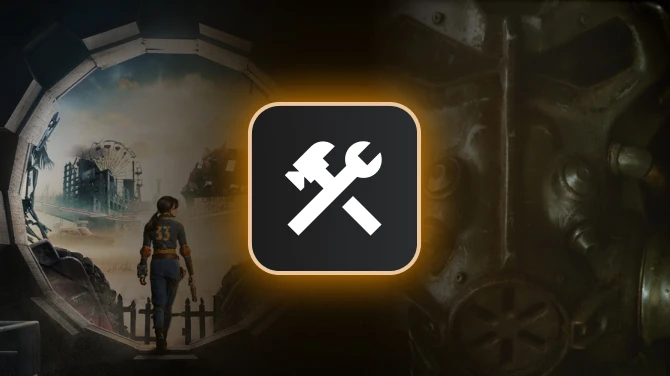Frequently Asked Questions
Table of Contents
1. Getting started
2. Customizing the mod
3. Using this with other mods
Getting started
"Does this mod have [feature]?"
This is what the current version of the mod can do:
* Spawn forage on any map.
* Spawn items on the ground or in containers, on any map. (See the GitHub readme's Item Settings section for supported categories.)
* Spawn large objects (stumps, logs, boulders, meteors, giant crops) on any map.
* Spawn ore on any map.
* Spawn monsters on any map with customized stats, loot, sprites, and requirements. (See the GitHub readme's Monster Type Settings section for detailed options.)
This is what it can't do:
* Change which fish you can catch (or any other aspects of fishing).
* Edit or remove objects/monsters spawned by Stardew itself, or by mods that don't use FTM.
"Does this mod work in multiplayer? Should other players install it?"
Yes, this mod should work in multiplayer. Every player should install the mod. It's not always necessary, but some features may act strange or cause errors in multiplayer if someone doesn't have this installed.
Any other mods and/or content packs that add new objects (e.g. Json Assets) should also be installed by every player.
Note that only the host's spawn settings will actually be used. Other features like console commands will still work for everyone.
"My config.json file only has a few settings in it. Is it broken?"
Nope! That "config.json" file is for the mod's personal options, which are mostly for debugging.
The file that controls your personal farm settings is in the FarmTypeManager/data folder, named something like "YourName_12345.json". In FTM content packs, look for the "content.json" file instead.
"The mod doesn't have a data folder. Where's my config file?"
"The mod does have a data folder, but default.json is the only file. Should I edit that?"
Start Stardew Valley and create/load the farm you want to customize. This will generate your farm's config file. (Read the instructions on the mod's main Nexus page for more info.)
The default.json file will change the settings in every new config file. To configure one specific farm, look for the file with your farmer's name -- something like Playername_12345.json.
Customizing the mod
"I don't know where to start! Is there an easy way to configure this?"
Yes! The easiest way is to use ConfigEditor.html in the optional files section on Nexus. It's a visual editor with tooltips for each setting.
Open the Config Editor in your browser, press the Load button, and select your character's .json file in the FarmTypeManager/data folder. (If it's not there yet, load your farm in Stardew first.) If you're designing a content pack instead, select your pack's "content.json" file, or just create a new file with the editor.
As for the settings themselves: there are a lot of options, but the ones at the very top can enable the default mod settings on their own. If you edit them to true instead of false (or, in the Config Editor, click the checkbox) here's what they will do, if you loaded a file from the data folder:
"ForageSpawnEnabled" will make extra forageable plants spawn on your farm, like on the Forest Farm.
"LargeObjectSpawnEnabled" will make any large (hardwood) tree stumps on your farm respawn each day, similar to the Forest Farm's extra stumps.
"OreSpawnEnabled" will make ore spawn on any "quarry" (dark brown) dirt on your farm, like on the Hilltop Farm.
"MonsterSpawnEnabled" will make monsters spawn on the farm at night, like the Wilderness Farm.
If you need to change more complex settings, try looking at the Config File Examples article.
If you want to use more advanced settings, check the Settings section of the GitHub readme, as well as the tooltips in the Config Editor. There should be some kind of explanation for each. Feel free to ask questions in FTM's main comment section as well.
"Forage is spawning on my farm now, but some of the plants are missing or different..."
By default, personal farm config files will use the Forest Farm's forage types. These aren't the same as "normal" forage on other maps; for example, certain mushrooms will spawn in summer and fall that don't appear on the "Standard" farm type.
"I enabled ore spawn, but it's still not spawning..."
Your farm probably doesn't have the same type of "quarry" that the Hilltop Farm does. Scroll down to the "Ore_Spawn_Settings" section and look for "AutoSpawnTerrainTypes". It should say "Quarry" underneath -- replace that with something like "Dirt", "Grass", or "Diggable" to make ore spawn somewhere else.
This is also important if you're trying to spawn things in the Mountain quarry -- the quarry there uses light-colored "dirt" tiles, unlike the farm.
If you tried the above and ore still won't spawn, try setting "StrictTileChecking" to "Medium". Some maps (especially custom maps) are configured differently, and their tiles might seem "invalid" to Stardew's spawn safety checks.
"Can I add the same kind of spawns to multiple maps?"
Yes! It's a bit harder to edit, though. Using the Config Editor is highly recommended, but you can also check the Config File Examples article for examples that do this.
You need to create multiple copies of all the bracketed "Areas" settings, separated by commas. In a default file, the settings should look like this:
"Areas": [
{
area #1's settings here
}
],When you're done editing, it should look more like this:
"Areas": [
{
area #1's settings here
},
{
area #2's settings here
},
{
area #3's settings here
}
],
After that, you just need to customize the different settings for each area (e.g. changing the "MapName" settings).
Using this with other mods
"Is this compatible with my other mods?"
Probably, yes! This mod adds some custom objects and monsters, but never directly changes Stardew's existing content. As of this writing, there aren't any known compatibility issues.
"I use a custom farm. Can I still spawn things there?"
"My mods add new areas to the game. Can this spawn things there?
Yes! Custom farms usually don't change the code this mod uses, so everything should still work the same way. Even if the custom farm added new areas, it often uses the same "Farm" map name for every section. (In technical terms, it's all one single map, just split into different sections with "warp" tiles and walls.)
If you use a mod that adds new areas to the game, this mod should still be able to spawn things there. To find out which "MapName" a new area uses, go there in-game and bring up the SMAPI console. Type whereami to display your current location's name and other info.
"I'm sure my settings are right, but stuff won't spawn on this custom map..."
Try to find the "StrictTileChecking" setting and change its value from "Maximum" or "High" to "Medium".
Some custom farms and other maps have unusual tile settings, so Stardew's safety checks think they're obstructed or otherwise invalid for spawning. One popular example is Immersive Farm 2's quarry; some versions of that map won't allow objects to spawn if you use higher strictness settings.
"How do I spawn items added by a mod?"
The forage spawner supports most custom items from mods. Add their IDs or names to the seasonal ItemIndex lists (or monster loot lists) the same way as any other item. See the GitHub readme's Item Settings section for formatting examples.
If you're not sure what an item's full name or category is, you can use SMAPI's console: load your farm, bring up the console, and type list_items followed by part of the item's name. For example: list_items "cola" or list_items "sword". If done correctly, you should see the item you want in the results.









0 comments